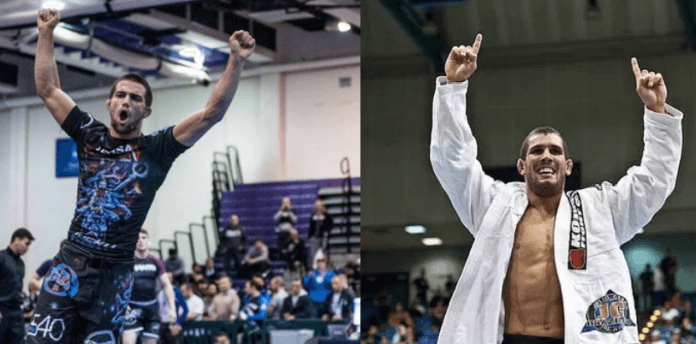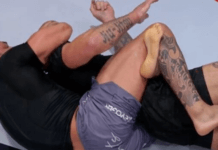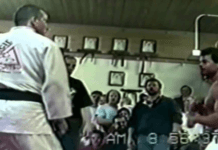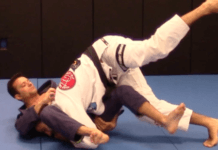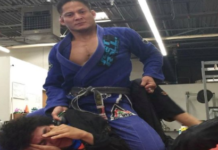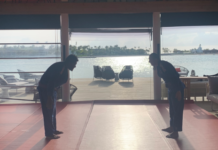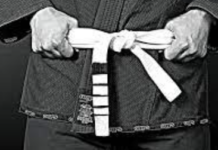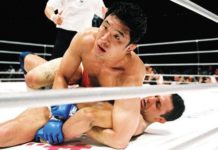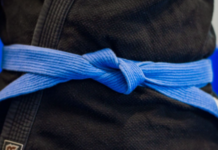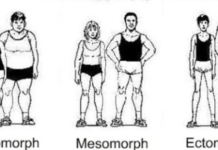There are two different styles of Jiu-Jitsu training, wearing the traditional BJJ kimono, and wearing No-Gi grappling wear. No-Gi was practiced by the Gracie family themselves as a reaction to constant clashes between BJJ and the other prominent fighting style of Brazil at the time, Luta Livre. As Luta Livre was practiced with no shirt and shorts only, combined with being a notoriously dirty style, its practitioners tended to use the opponent’s Gi to their advantage. Therefore the Gracies started to train without the kimono in order not to give an unwanted advantage to their opponents.
As things developed, in recent years almost all BJJ academies train in both styles, and some train in No-Gi only, like 10th Planet Jiu-Jitsu, with the legendary Edie Bravo who started his own tournament championship, and the surge in popularity of MMA, in which No-Gi techniques are much more relevant than Kimono techniques, style, and pace. Subsequently, the question “which style is better?” is constantly being asked. We’ll try to solve this difficult puzzle and help determine which is better under different conditions.
Gi or No-Gi for MMA and cross styles competitions
There’s no doubt here that No-Gi is superior for MMA fights or when competing sportively against other styles. MMA is perhaps the best arena that tested BJJ. UFC is the most famous Mixed Martial Arts promotion, and the older generation of MMA fans surely remember Royce Gracie fighting in a Kimono. But these were different times, and his opponents didn’t know much about ground fighting. When he faced the legendary Kazushi Sakuraba for the first time he still wore a Kimono, but Royce didn’t wear it on their second fight, as Saku humiliated him and made fun of his Gi using it against him. Thus, no Gracie wore a Kimono for an MMA fight thereafter.
All MMA fighters today train in BJJ, and they put greater emphasis on No-Gi. It’s because in a Mixed Martial Arts fight, grabbing and holding onto your opponents clothes is forbidden, and there’s a huge advantage to being slippery and having the ability to slip out of chokes and submissions. Also, many of the Gi techniques are just not possible and therefore useless under such conditions. Moreover, a lot of BJJ techniques for Gi and No-Gi alike aren’t suitable when punching and kicking is allowed, like certain types of guard, but in general. No-Gi Jiu-Jitsu is simply more compatible with mixed martial arts.
This is true also when facing other grapplers from different styles like wrestling and catch wrestling. It’s more likely that your opponent will find a way to use your kimono against you than you’ll manage to use it as a weapon against him. Therefore training bare chest (or with a rashguard) and MMA shorts is superior for mixed martial arts.
Which is better for self defence?
Even though a lot of martial artists doom the Kimono as anachronistic, and compare it to fighting in pajamas. Most people say the No-Gi is much more realistic and works better in a street fight. We disagree with this approach, and argue the training with a Kimono translates better to most street fights. Did you ever notice how many punks who are used to street fighting take their shirt off just before they instigate or get involved in a fight? It’s not a mere attempt to scare their opponent, and not a coincidence either. The simple reason they do so is not to allow their opponents to grip their shirt.
When training in a Kimono, you’ll learn a lot about grips, and the importance of each grip combination to the success of a certain technique. Your grips allow you enhanced control over your opponent and the situation. That’s why you’ll notice that a fight in Gis is usually a lot slower, and you’ll have to fight over every inch. A fight without one is much faster and more dynamic, and that’s the exact opposite of what you want in a street fight.
You don’t want to focus on submissions in a street fight, but rather on control. You want to control the situation and your attacker, get on top so you can have a full peripheral vision (looking for other possible attackers and dangers), and have the ability to escape and run if necessary. In most fights you’ll get into, considering that you’re a peaceful individual, and not a hoodlum who’s looking for a fist fight, will involve wearing clothes, and shirts in particular. That will give you an advantage in the form of better gripping. You can also see how a t-shirt is pulled above one of the fighter’s head, blocking his vision, and taking the control of the fight from him. The video below is an excellent example – right at the beginning of the fight the guy who wears brown, who seems to be the aggressor in this situation is being thrown to the ground by his t-shirt alone.
What is easier to learn, Gi or No-Gi?
It’s hard to say as there’s a huge personal component. However, most people argue that it’s easier to learn BJJ with a kimono, as it’s much slower paced. Also, from observations, we can tell that the less talented students (we’re not all equal and good at the same things) tend to fare much better when fighting in a Gi. However, fighting in a Kimono also means more techniques, so the higher you climb up the learning curve the more sophisticated the art is.
So we’d argue that if you’re a beginner, most likely that it’ll be easier for you to start with a Gi. At later stages it really boils down to personal abilities and how each individual understands the game. If you’re good in the scramble, it’s more likely that you’ll improve faster without a kimono, and if you’re more logical and tend to look at Jiu-Jitsu like a game of chess, you’ll fare better in a Kimono. Because we look at Jiu-Jitsu as a lifetime hobby, or a way of life, and when you examine it from a bird’s eye point of view, it doesn’t really matter. Therefore this query is a tie.
What’s better for fitness and conditioning?
Training in a Gi will give you Popeye arms in the long run, and that’s a fearsome quality in a grappler. Any BJJ practitioner who got the chase to roll with a good Judoka knows how frustrating it can be. You can’t seem to break their grips and have to work around them, and you also feel it in No-Gi training, when releasing your arm from a super solid grip is not as easy as you remembered it to be.
However, No-Gi being much faster paced, you’ll get to sweat more, train at a higher heartbeat, move much more than with a Kimono. Training No-Gi will make you a shredded beast in the long run, and therefore we say that No-Gi Jiu-Jitsu is better for fitness and conditioning.
Who wins in terms of transferability?
We agree with Bernardo Faria, who believes that if you want to be a complete grappler, you should focus more on Gi than No-Gi. It’s a bit counterintuitive as there are No-Gi grappling specialists like Edie Bravo and Gordon Ryan, who are really phenomenal in No-Gi competitions. However, a good point that Bernardo backs up with statistics, is that in all No-Gi competitions, the competitors who do better, who win, are mostly those who train with Gi and No-Gi alike, and even more so in Kimono competitions.
Bernardo says that the Kimono gives you more tools as well, so you won’t be inferior when training with a Gi. However, some No-Gi specialists claim to have more techniques and tools when not wearing a Kimono. In forums people argue that a No-Gi BJJ black belt is not a Kimono BJJ black belt. The counter to that is that if a “normal” BJJ black belt is considered a No-Gi BJJ black belt as well, the opposite should also apply, as the No-Gi guy will probably have a little edge. This would have been true in our opinion if practitioners who train with a Gi would never train without it.
The conclusion from our point of view is a tie, with 2.5 out of 5 to each. When you examine each of the questions above, you should ask yourself which of the discussed aspects is more important to you, and you should base your decision accordingly. And as always, you should do what feels right and fun for you.

